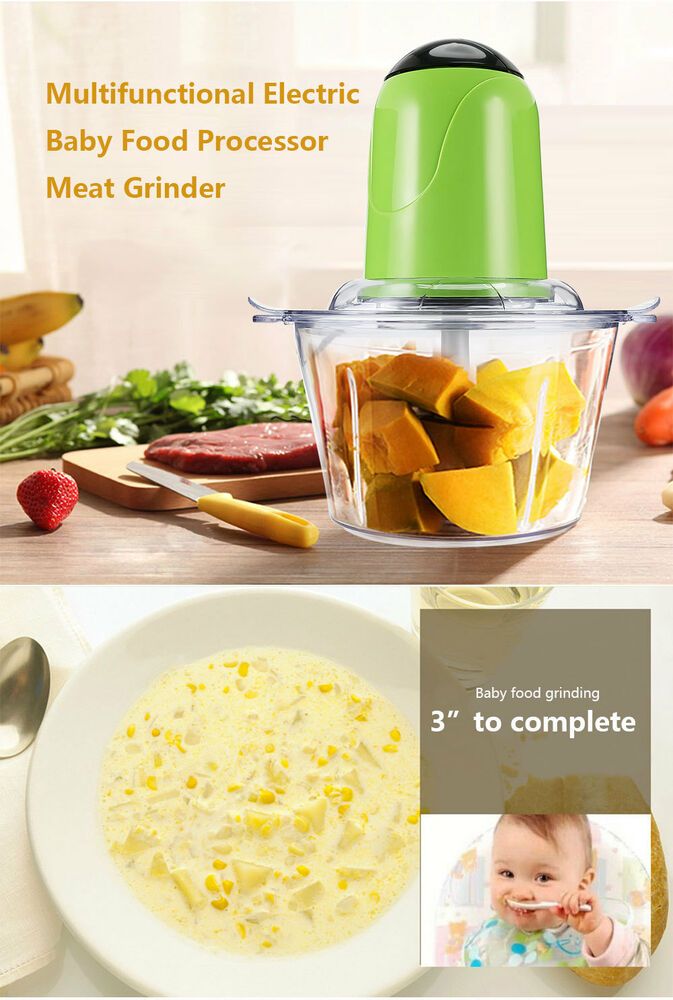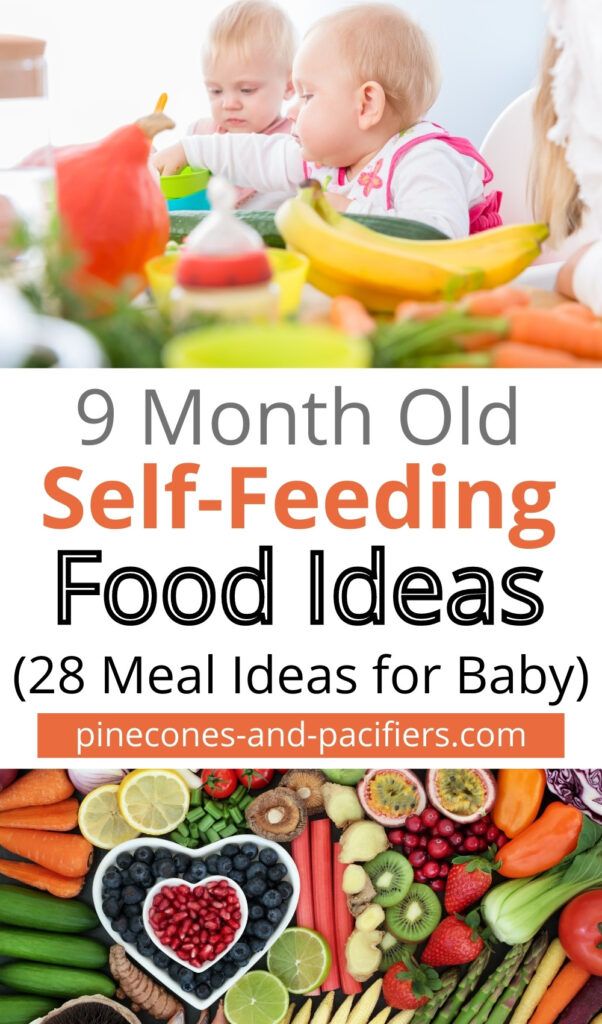Making my own baby food recipes
10 Easy Homemade Baby Food Ideas (No-Cook, Super Fast, Stage 1)
Learn how to make the EASIEST homemade baby food recipes (stage 1) for your little one with these super simple no-cook ideas. Plus: I have the best tips for making them ahead and freezing them so you can batch cook and simplify your days!
Homemade Baby Food
As a mom to three kids, I know firsthand how the urge to make homemade baby food can be both exciting and a little daunting. And if you have a busy schedule or other kids in the house, finding the time to actually do it can seem impossible. But, there are so many healthy foods that you can transform into stage 1 baby food purees with hardly any work or special equipment at all!
TIP: I use a regular blender for all of these recipes, so you don’t need to buy a special baby food maker unless you want to.
Baby Food Recipes for 6, 7, and 8 Month Old Babies
These homemade baby food ideas are designed for younger babies who are still eating thinner purees, but you can of course use them for older babies and toddlers too. Each can be served as is, or you can combine more than one together to create new flavors if you’re feeling creative!
TIP: If you want to add fat or protein to any of these fruit or veggie purees, simply stir in a little whole milk yogurt, coconut cream, or Avocado Puree.
Best Way to Make Baby Food
I’ve found that the easiest and most approachable way to make baby food is to simply use a blender. With fresh ingredients and a little water, breastmilk, or formula to thin it as needed, you can easily make your baby meals without investing in equipment you may not use very long.
TIP: You’ll want to start with at least 1 cup of any base ingredient to ensure that there’s enough in the blender to fully blend up.
Tools You Need to Make Homemade Baby Food
To make these baby food recipes you’ll need:
- Blender (you could also use an immersion blender if yours is very strong)
- Water, formula, or breastmilk to thin as needed
- Knife for chopping produce
- Spoon
- Bowls
- Ice cube tray
- Freezer bags for storage
- Baby food storage containers
Stage 1 Baby Food
These baby foods are meant for early eaters as they are typically very thin and easy for a baby to move around in their mouths. I follow the recommendations to wait until 6 months to start solids, so I personally don’t worry excessively about this distinction as I like babies to experience some texture in their purees. (The ones you find at the store are low allergenic foods and are meant for 4+ months.)
I follow the recommendations to wait until 6 months to start solids, so I personally don’t worry excessively about this distinction as I like babies to experience some texture in their purees. (The ones you find at the store are low allergenic foods and are meant for 4+ months.)
Stage 2 Baby Food
These baby foods are typically a little bit thicker, sometimes include more than one ingredient, and offer a wider variety of ingredients. Most babies are ready for these sorts of purees around 7-8 months, or once they’ve mastered thinner purees. (Again, since I like to do a combined baby feeding approach with both baby led weaning and purees, I don’t worry too much about following the calendar to decide when to introduce these.)
TIP: As a backup to my homemade baby foods, I love the options from Amara Organic Baby Food (paid affiliate link) since you simply need to stir it together with breast milk, formula, or water and it’s ready to serve.
And now, for my ten go-to homemade baby food purees that you don’t even need to cook!
1.
 Avocado Puree
Avocado PureeTo make avocado puree for a baby, you just need a fresh avocado, a blender, and some lemon juice if you plan to store it for later. I sometimes even do this with just a fork if the avocado is super soft! It’s a perfect way to introduce a low allergenic food that’s rich in healthy fats.
TIP: Get the full recipe for Avocado Puree here.
2. Bean Puree
Baby’s early foods don’t have to be all one food group and beans are a great food to have in the mix. You can do this easy bean puree with chickpeas, pinto beans, black beans, or even white beans, thinning it as needed with water, formula, or breastmilk. This is a great puree to mix with a little sweet potato or butternut squash.
TIP: Get the full recipe for Bean Puree here.
3. Blueberry Puree
Using fresh or frozen blueberries, this easy berry puree is loaded with fresh flavor and antioxidants. It’s delicious on its own or stirred into plain whole milk yogurt or baby oatmeal. (Note that it thickens up as it sits in the fridge, so you’ll need to stir it well to serve.)
(Note that it thickens up as it sits in the fridge, so you’ll need to stir it well to serve.)
TIP: Get the full recipe for Blueberry Puree here.
4. Kiwi Puree
With a bright flavor, this puree is great for babies who seem to love flavor—and it’s a fun one to make and store for later. You’ll want to make sure that you choose very ripe and sweet kiwi and taste it before you make the puree to ensure that it’s not too tart. (If it seems tart, you can mix with banana or applesauce.)
TIP: Get the full recipe for Kiwi Puree here.
5. Mango Puree
Using fresh or thawed frozen mango, this baby puree blends up in seconds. It’s bright, flavorful, and a great source of immune-boosting vitamins. Taste your mango to be sure that it’s sweet and not too tart. (If it’s tart, you can add Applesauce or ripe Banana Puree.)
TIP: Get the full recipe for Mango Puree here.
6. Peach Puree
Turn fresh or frozen and thawed peach slices into a super smooth Stage 1 baby food with this easy blender method. You’ll want to strain out the skin since it’s hard to blend up smooth, even with a high powered blender, but that’s so easy to do! This baby food recipe is a nice alternative to applesauce.
You’ll want to strain out the skin since it’s hard to blend up smooth, even with a high powered blender, but that’s so easy to do! This baby food recipe is a nice alternative to applesauce.
TIP: Get the full recipe for Peach Puree here.
7. Whipped Peanut Butter
This may not have occurred to you, but whipped peanut butter is a great baby food! This is a perfect way to introduce baby to peanut butter and to offer it safely there after. You just need to stir water into unsweetened creamy peanut butter until it forms a whipped consistency like yogurt. It’s smooth, not too sticky, and packed with protein.
TIP: Get the full scoop on introducing peanuts to baby here.
8. Pineapple Puree
Blend up fresh or frozen pineapple chunks into a tropical baby food puree that’s smooth and creamy. This is yummy on its own or paired with whole milk plain yogurt. Taste your pineapple to ensure that it’s not too tart. (If it’s tart, you can add Applesauce or ripe Banana Puree. )
)
TIP: Get the full recipe for Pineapple Puree here.
9. Strawberry Puree
Fresh strawberries blend up into a perfectly smooth homemade puree without the need for any additional liquid. You can serve this as is, or mix with applesauce if desired. The flavor of your berries will determine the flavor of your puree, so be sure to taste them for sweetness.
TIP: Get the full recipe for Strawberry Puree here.
10. Banana Puree
Ripe bananas make great homemade baby food with the help of just a blender. This is a super simple baby food to make at home and it’s easy to digest as a Stage 1 baby food. Use ripe bananas with brown spots to ensure that the puree tastes sweet and is easy for baby to digest.
TIP: Get the full recipe for Banana Puree here.
Homemade Baby Food Storage
The easiest way to store homemade baby food is to add fresh purees to an ice cube tray and freeze. Once frozen, simply pop out the cubes and store in labeled freezer bags for up to 3 months. These are a perfect way to make it easy to send homemade baby food to daycare or to simply get ahead for the coming week.
Once frozen, simply pop out the cubes and store in labeled freezer bags for up to 3 months. These are a perfect way to make it easy to send homemade baby food to daycare or to simply get ahead for the coming week.
TIP: Find more information about storing baby food—including the best small food storage containers—here.
]
Tips for Making the Best Homemade Baby Food
- Use at least 1 cup base ingredient to ensure that a blender has enough volume to blend well.
- Thin any homemade puree with water, formula, or breast milk.
- Freeze any baby food you won’t use within 3 days in an ice cube tray. Transfer frozen cubes into freezer storage bags for up to 3 months. Thaw these frozen baby food recipes in an airtight container in the fridge overnight before you plan to serve.
- Taste all fresh foods for sweetness and to ensure that your puree isn’t too tart. To tame tartness, mix any puree with Banana Puree , Avocado Puree, Applesauce, or Mashed Sweet Potato.
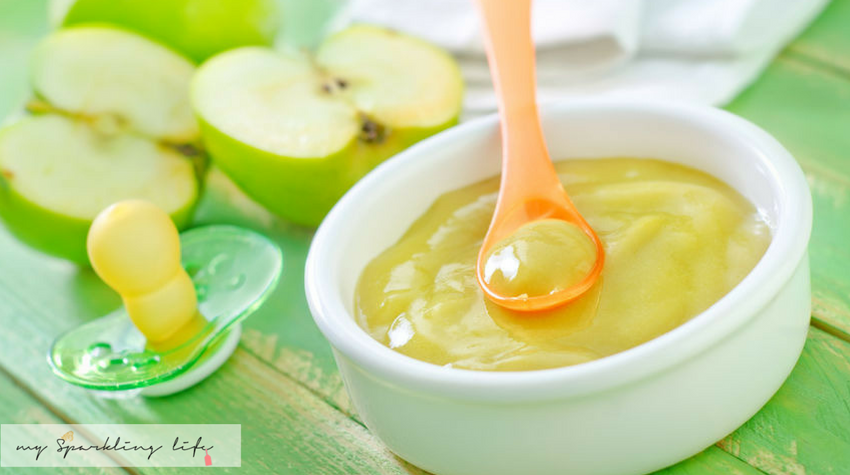
- If you want to add fat or protein to any of these fruit or veggie purees, simply stir in a little whole milk yogurt, coconut cream, or Avocado Puree.
- Use breastmilk or formula in place of the water if desired.
- Mix two purees together for more complex flavors.
- Add texture to any puree by stirring in baby oatmeal or hemp seeds.
- For more details on each of these, find them here: Avocado Puree; Banana Puree, Bean Puree; Blueberry Puree, Kiwi Puree, Mango Puree, Pineapple Puree, Peanut Butter Puree, Peach Puree, Strawberry Puree
I’d love to hear your feedback on this way of making simple baby food, so please comment below. I so appreciate hearing your experience with my recipes!
Prep Time 5 minutes
Cook Time 0 minutes
Total Time 5 minutes
Author Amy Palanjian
Cuisine American
Course Baby Food
Calories 42kcal
Servings 4
- ▢ 1 cup blueberries, diced strawberries, diced peaches (peeled), diced kiwi (peeled), diced pineapple (peeled), diced banana (peeled), diced mango (peeled), diced avocado (peeled), OR beans (rinsed and drained)
- ▢ water, formula, or breast milk (as needed)
Choose one fruit, the avocado, or beans and add to a blender.

If making the puree with blueberries, strawberries, peaches, kiwi, pineapple, mango, or beans, add ¼ cup water and blend, adding more water as desired to make a thin, very smooth puree. If making avocado or banana, just blend (without water) until very smooth.
Serve or store in an airtight container for 3-5 days in the fridge, or up to 3 months in the freezer.
Vitamix Blender
Storage Containers
Silicone Ice Cube Tray
- Use at least 1 cup base ingredient to ensure that a blender has enough volume to blend well.
- Thin any homemade puree with water, formula, or breast milk.
- Freeze any baby food you won't use within 3 days in an ice cube tray. Transfer frozen cubes into freezer storage bags for up to 3 months. Thaw these frozen baby food recipes in an airtight container in the fridge overnight before you plan to serve.
- Taste all fresh foods for sweetness and to ensure that your puree isn't too tart.
 To tame tartness, mix any puree with Banana Puree , Avocado Puree, Applesauce, or Mashed Sweet Potato.
To tame tartness, mix any puree with Banana Puree , Avocado Puree, Applesauce, or Mashed Sweet Potato. - If you want to add fat or protein to any of these fruit or veggie purees, simply stir in a little whole milk yogurt, coconut cream, or Avocado Puree.
- Use breastmilk or formula in place of the water if desired.
- Mix two purees together for more complex flavors.
- Add texture to any puree by stirring in baby oatmeal or hemp seeds.
- For more details on each of these, find them here: Avocado Puree; Banana Puree, Bean Puree; Blueberry Puree, Kiwi Puree, Mango Puree, Pineapple Puree, Peanut Butter Puree, Peach Puree, Strawberry Puree
Serving: 0.25cup, Calories: 42kcal, Carbohydrates: 11g, Protein: 1g, Fat: 1g, Saturated Fat: 1g, Polyunsaturated Fat: 1g, Monounsaturated Fat: 1g, Sodium: 1mg, Potassium: 57mg, Fiber: 2g, Sugar: 7g, Vitamin A: 40IU, Vitamin C: 7mg, Calcium: 4mg, Iron: 1mg
Tried this recipe?Rate in the comments and tag @yummytoddlerfood on IG!
Tips on Freezing and Best Containers
Learn the secrets to storing and freezing homemade baby food for ultimate freshness—AND the best baby food storage containers to use to ensure that you never waste what you make!
Baby Food Storage
Going through the effort to make homemade baby food really only works if you have a good plan for how to store the food to ensure that it stays fresh and that baby has plenty of opportunities to enjoy it. After making a LOT of baby food for my third kiddo to send with him to daycare, I got into a good routine of making and storing baby food—both in the fridge and freezer. Here’s how you can do it too.
After making a LOT of baby food for my third kiddo to send with him to daycare, I got into a good routine of making and storing baby food—both in the fridge and freezer. Here’s how you can do it too.
TIP: You can find my favorite baby food recipes here.
Homemade Baby Food Storage: In the Fridge
You can store baby food in the fridge in airtight containers for up to 3 days. You can use masking tape and a Sharpie to label the containers with the contents and the date if you have a hard time keeping track of when you made something. (It’s definitely helpful to do that!)
Best Baby Food Storage Containers
I have a four favorite baby food storage containers that I use regularly.
1. Wean Green Baby Food Cubes
These are small, incredibly durable, and made from glass. They’re easy to clean and last forever. (Seriously, I’ve been using the same set for 7 years and they’re still as good as new!) $19.99 for a set of 4
2.
 Easy Lunchboxes Mini Dippers
Easy Lunchboxes Mini DippersThese small containers are a perfect size for 1-2 frozen baby food cubes and they’re my go to for packing food for a baby to take to daycare. They also nest nicely when stored in the cabinet. $7.95 for a set of 8
3. Beaba Food Storage Containers
I have two sets of these and I use them regularly for larger amounts of baby food (you could probably fit 4 cubes of frozen food) and for toddler snacks. When assembled, they snap together, so they’re an easy way to stay organized. $14.95 for a set of 6
4. Oxo Tot Baby Food Blocks
This neat system is easy to keep contained in the fridge and is also made from a polypropylene body that is PVC, BPA, and phthalate free. They are dishwasher and microwave safe. $9.99 for a set of 6
Homemade Baby Food Storage: For Freezing
Storing homemade baby food in the freezer allows you to make a bigger batch at once, and then serve it to baby over the course of a few weeks or months. The easiest way is to use an ice cube tray, which has the added benefit of portioning out the baby food nicely.
The easiest way is to use an ice cube tray, which has the added benefit of portioning out the baby food nicely.
TIP: Any ice cube tray will do. You can use silicone ice cube trays if you prefer a non-plastic option.
Baby Food Storage Without An Ice Cube Tray
If you don’t have an ice cube tray or you’d just rather not use one, you can place a predetermined amount of baby food into a pint-size freezer bag. Remove as much air as possible, press flat, and seal. Place flat in the freezer to freeze. Then you can thaw the entire bag in the fridge overnight, or break off a portion of it to thaw.
How to Store Baby Food in the Freezer Step by Step
- Place baby food into each compartment of the ice cube tray, or fill as many as you need to with the amount of baby food you have.
- Cover (if your ice cube tray has a cover) and freezer for 4-6 hours or overnight.
- Pop out frozen cubes and transfer to freezer storage bags. Label as desired with the type of baby food and the date.

- Store in the freezer for up to 3 months.
TIP: I like to have a bag of sweet fruit purees and more savory vegetable purees to avoid having too many separate bags in the freezer at any given time. Then you can combine them into baby food combinations easily!
How to Thaw Baby Food
To thaw baby food, simply remove a cube (or as many as you need) and place into airtight containers. Thaw overnight in the fridge and serve. 1 cube may be plenty for a baby aged 6-7 months and older babies may enjoy two cubes.
Tips for the Best Baby Food Storage
- Keep fresh baby food in an airtight container for up to 3 days in the fridge.
- Use a regular ice cube tray to freeze, a silicone ice cube tray with a lid, or a small freezer bag with the contents pressed flat.
- Store frozen baby food in a freezer storage bag in the freezer for up to 3 months.
- To avoid freezer burn, try to remove as much air as possible from the storage bags.

- Label your bags with the contents and the date.
- To thaw baby food, simply remove a cube (or as many as you need) and place into airtight containers. Thaw overnight in the fridge.
- Use leftover baby food to flavor yogurt, baby oatmeal, baby rice cereal, smoothies, or cottage cheese.
- See some of my favorite Baby Food Pouch recipes here for more ideas on how to serve your baby food!
I’d love to hear your feedback if you have another storage technique or container that you love, so please comment below!
No, you're not a terrible parent if you feed your child canned baby food
Contents
- Gather your tools
- Keep it simple
- Get into the frozen food section
- Get busy making your baby food
Store-bought baby food isn't poisonous, but these tips will prove that making your own food isn't difficult either. Find the balance that works for you.
Is canned baby food the worst thing in the world? Some recent headlines may make you nod your head "yes" and then feel like the worst parent for not always having time to make homemade puree for your child.
The vast majority of packaged baby food and snacks contain one or more heavy metals such as arsenic or lead. report from the nonprofit Healthy Babies Bright Futures.
Which, of course, sounds scary. But does that mean you can never give your child store-bought food again?
The answer is no, experts say. “The metal content in baby food is not really higher than in all other foods that adults and older children consume every day. Parents shouldn't be too alarmed by this news," says Samantha Radford, MD, public health expert, chemist and owner of Evidence-Based Mommy.
Heavy metals are naturally present in the soil, and crops such as rice and vegetables that grow underground tend to absorb these metals. This is true for rice, carrots or sweet potatoes, which are used to make packaged baby food. Ingredients you buy whole from the store, including organic ones, although rice tends to be higher in metals than vegetables like carrots or sweet potatoes.
However, it is certainly worth taking steps to minimize the impact on your family, using the home method whenever possible.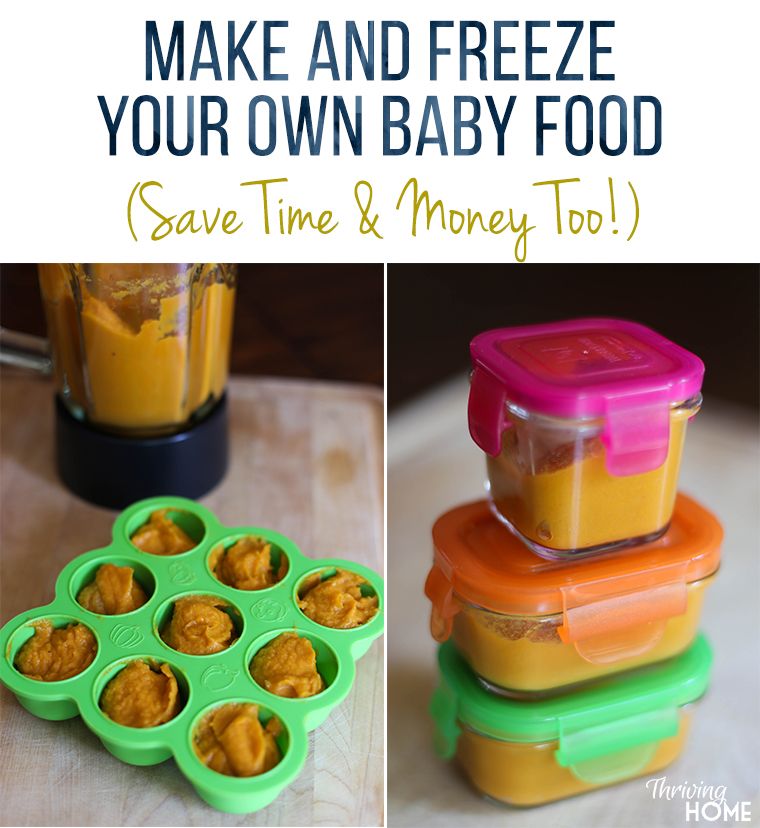 “My advice would be to avoid rice-based snacks and canned rice-based purees,” says Nicole Avena, Ph.D., author of Feeding Your Baby and Toddler.
“My advice would be to avoid rice-based snacks and canned rice-based purees,” says Nicole Avena, Ph.D., author of Feeding Your Baby and Toddler.
In addition, Avena says, "When you decide to make puree at home, you will have more control over what goes into it."
Doing things yourself doesn't have to be insanely difficult or time consuming. Here are some smart tips to make the process easier so that making your own baby food doesn't drive you crazy.
Gather Your Tools
A fancy baby food machine is great if you have one. But special devices are definitely not required. All you really need to cook delicious food for your little one is the following:
- Steam basket or colander for steaming. Cover the steamer basket with a lid for faster steaming. Try the OXO Good Grips stainless steel steamer with retractable handle.
- Blender or food processor to puree ingredients. Try the Ninja Mega Kitchen System blender/food processor.

- Potato crusher. Use it as an easy alternative to a blender or food processor, or save it to make larger purees when your child is a little older. Try the KitchenAid Gourmet Stainless Steel Wire Mill.
- Ice trays. They are best suited for freezing individual portions of puree. Buy a bunch so you can freeze multiple batches of food at once. Try OMorc silicone ice molds, 4 pcs. packaged.
- Large baking tray. This is useful for freezing finger foods on a flat surface so that they do not stick together in the freezer when placed in a bag or container. Try Nordic Ware's natural aluminum baker's half sheet.
- Parchment prevents food that can be eaten with your fingers from sticking to trays in the freezer.
- Zippered plastic bags can be used to store frozen cubes of puree or snacks in the freezer.
- The permanent marker is the key to labeling so you know what's really in these bags.

Keep it simple
Sure, those mini mac and cheese cups or turkey meatloaf cupcakes you saw on Instagram look funny. But you don't put as much effort into feeding your baby fresh, homemade food, especially at an early age.
As your baby gets used to solid foods, focus on making basic fruit and vegetable purees with individual ingredients. Over time, you can start to combine purees—such as peas and carrots or apple and pear—for more interesting flavor combinations.
Also remember the world of easy-to-make snacks:
- hard-boiled egg quarters
- sliced banana
- avocado, lightly shredded
- sliced berries
- lightly mashed chickpeas or black beans
- cubes of baked tofu or cheese
- sliced roast chicken or turkey
- cooked ground beef
- mini muffins or pancakes
Get to the frozen food section
Your time is too precious to spend washing and removing spinach stalks or peeling and slicing a whole butternut squash.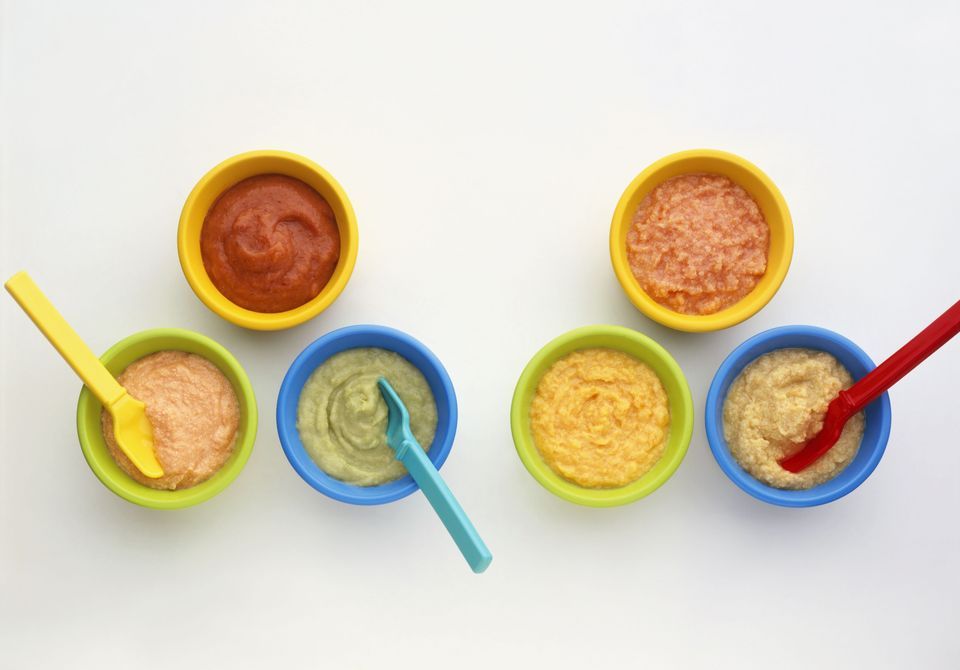 Instead, opt for frozen vegetables or fruits that can be quickly cooked in the microwave and added to a blender or food processor with your favorite seasonings.
Instead, opt for frozen vegetables or fruits that can be quickly cooked in the microwave and added to a blender or food processor with your favorite seasonings.
Leave steam cooking only for foods that you would normally not find frozen, such as apples, pears or beets.
Get busy making baby food
As a new parent, you've probably learned how to prepare (relatively) healthy meals and snacks for yourself quite effectively. So apply the same idea to your child's food.
Spend an hour about once a week preparing large portions of mashed potatoes or finger food. Bedtime or after your little one goes to bed is great for this, so you won't be distracted or interrupted 30 times.
But if you prefer to use your child's bedtime to get extra rest, ask your partner or other caregiver to take your child for an hour of awake so you can cook in peace.
Make friends with your freezer
Put tablespoons of puree in ice cube trays and freeze them, then remove the cubes and store them in plastic bags for quick and easy eating.
Cooking snacks like muffins or pancakes? Spread them out on a baking sheet so they don't stick together while freezing, and pack them in bags.
And don't forget to label each bag so you know exactly what's inside. Within a few weeks, you will have a decent supply of food for your baby in the freezer. And chances are that without a label, you won't be able to tell the difference between peas and green beans.
Kindergarten-style cottage cheese casserole for breakfast
Kindergarten-style cottage cheese casserole
Unfortunately, Javascript is disabled or not working for you . To work with most of the functions on our site, this is a necessary element. Contact your administrator to resolve this issue.
Composition/ingredients
6
Change composition
servings:
Step by step cooking
Cooking time: 1 h 40 min PT1h50M-
Step 1:
How to make a cottage cheese casserole like in kindergarten? Prepare food.
 Cottage cheese, milk, butter and eggs should be at room temperature, so take them out of the refrigerator in advance. What is the best cottage cheese to use? It can be of any fat content. But a casserole made from fatty cottage cheese will be tastier. It is better to add a couple of tablespoons of sour cream, kefir or milk to low-fat cottage cheese. Rub the cottage cheese through a fine sieve or punch with a blender.
Cottage cheese, milk, butter and eggs should be at room temperature, so take them out of the refrigerator in advance. What is the best cottage cheese to use? It can be of any fat content. But a casserole made from fatty cottage cheese will be tastier. It is better to add a couple of tablespoons of sour cream, kefir or milk to low-fat cottage cheese. Rub the cottage cheese through a fine sieve or punch with a blender. -
Step 2:
Combine eggs and sugar in a suitable bowl. To make our casserole airy and tall, beat the mixture with a mixer until a stable fluffy foam forms. Add grated cottage cheese and milk. Continue beating until smooth.
-
Step 3:
Add soft butter. Whisk the mixture again until smooth. The butter should be just softened, not melted, otherwise the consistency of the curd dough will change.
-
Step 4:
Gradually add semolina. Beat the mass with a mixer at low speed each time. If the cottage cheese you use is too wet, increase the amount of semolina so that the dough is not liquid.

-
Step 5:
Leave the dough for 15-30 minutes to swell the grits. Why is it better to add semolina and not flour? Baking with semolina will be more tender and fluffy. After baking, it will not fall off and retain its shape. In advance, 10-20 minutes before baking, turn on the oven to warm up to 180 ° C. Transfer the dough to a suitable baking dish. My form was 25 by 28 cm.
-
Step 6:
Bake the casserole for about 30 minutes until golden brown. Focus on the features of your oven. The baking temperature may be lower or higher than indicated in the recipe (from 175 to 200°C). Cool the finished casserole, and then cut. Serve the casserole at the table. Enjoy your meal!
Such a tender casserole was given to us in kindergarten. I still remember her taste. And different sauces were also served with it: chocolate, vanilla, milk, and sometimes condensed milk. The recipe can be supplemented and diversified by adding blackcurrants, raspberries and finely chopped dried apricots to the dough.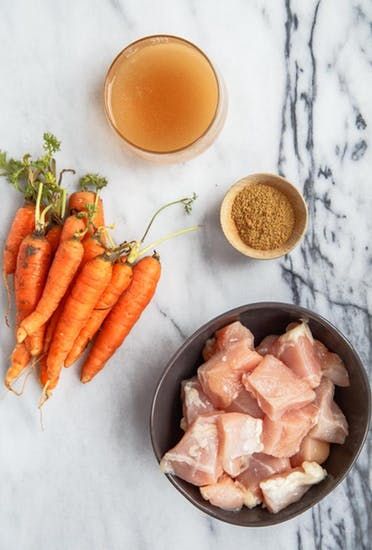 Pre-steam dried fruits by soaking them in hot water for 10-15 minutes. No wonder it was the most favorite dish in the garden.
Pre-steam dried fruits by soaking them in hot water for 10-15 minutes. No wonder it was the most favorite dish in the garden.
How do you make vanilla sauce? Pour milk (350 ml) into a saucepan and bring to a boil. In a bowl, stir 2 eggs, 50 g sugar and 10 g flour. Gently pour a small amount of hot milk into the egg mixture. To prevent the mixture from curdling, stir it quickly with a fork or whisk. Pour the egg-milk mixture into the saucepan with the rest of the milk. Cook the sauce over very low heat, stirring constantly. Bring to a boil, but do not boil. When the sauce thickens, remove from heat. Pour vanillin or vanilla sugar for flavor (add according to instructions). Stir. Vanilla sauce is ready!
Important! In order for the curd dough or filling to be successful, it is important to carefully consider the choice of curd. A poor-quality product can ruin baked goods, as it directly affects the texture, taste and final result. How to choose the right cottage cheese for dough or fillings, read in this article.
Please note that every oven is different. The temperature and cooking time may differ from those indicated in the recipe. To make any baked dish successful, use the useful information about the features of the ovens!
How do you bake fluffy and tender casseroles? You should not expect the same increase in volume from the curd mass as, for example, from a yeast cake or biscuit. The splendor of the cottage cheese casserole directly depends on the size of the chosen form: the smaller the form and the higher its sides, the higher the layer of curd mass for baking will turn out, which means that the finished casserole will be higher.
Any ovenproof dish will work for this recipe. If you use a silicone mold, then you do not need to coat it with butter or margarine. But it is better to lightly grease metal, ceramic or glassware with vegetable oil so that the pastries do not burn.
What is this code for?
Attention! A special application must be installed on the phone / tablet.


